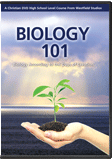No Taste for Meat?
A lion that wouldn’t eat meat? What does this tell us about the pre-Fall world?
As the proud owner of several cats over the years, I can honestly say I have never observed them refusing meat when it was offered to them. But that was exactly the “attitude” of a lioness by the name of Little Tyke.1 She refused to eat meat and was fed solely a diet of various grains, milk, and eggs. While we might be tempted to consider this lion a freak of nature, what can this vegetarian cat show us about biblical truths?
Do Members of the Cat Family Need to Eat Meat?
The simple answer to that question in our post-Fall (Genesis 3) world is “yes.” However, we know from Genesis 1:29–30 that Adam and Eve and all the animals were commanded to only eat “green plants/herbs” for food. The cat kind (likely included in the “beasts of the earth”— Genesis 1:24) was originally mandated to eat only plants; thus, their bodies must have been able to obtain all the nutrients necessary from plants. The diet of Little Tyke (various grains) may have more closely resembled that of the original cat kind.
The cat kind . . . was originally mandated to eat only plants; thus, their bodies must have been able to obtain all the nutrients necessary from plants.
In a post-Fall world, meat is believed to be a necessary part of the cat diet to obtain nutrients such as taurine and cobalamin (Vitamin B12). Taurine is an organic acid that is synthesized from the amino acid cysteine. Amino acids are the building blocks of proteins, which are a major component of meat but not of plants (which are mainly carbohydrates, including indigestible cellulose). Cats are the only mammals known to lack the ability to synthesize taurine. Lack of taurine in a cat’s diet can lead to eye problems, hair loss, tooth decay, and heart problems. Taurine is so important that it is a required additive to cat food.
Vitamin B12 is found naturally in meat, milk, and eggs. Some animals (like herbivores) possess bacteria in their rumens or gut that synthesize B12. Vitamin B12 is involved in many aspects of cellular metabolism, especially DNA synthesis. Possibly all animals and humans originally had symbiotic bacteria in their gut that synthesized B12 (this relationship was altered following the Fall). It is also plausible that pre-Fall/pre-Flood plants had levels of taurine and B12 that met the requirements for the cat kind.2 Degenerative mechanisms, such as mutation following the Fall, or plants going extinct may have led to changes in the nutritional quality and availability of plants, making meat a necessary part of the cat kind diet.3
In 2006, a study was published regarding the effects of vegetarian diets on cats.4 The study found that all of the cats on the vegetarian diet had normal levels of cobalamin, and the majority had normal levels of taurine in their blood. Commercially available vegetarian cat food is supplemented with cobalamin and taurine, and both substances can also be obtained as a supplement that is added to the cat’s diet.
Little Tyke’s diet did not include supplements of these substances, even though they would have been present in the milk and eggs she consumed. However, milk and eggs were not given to her in quantities that could have provided sufficient amounts of these substances. Taurine and cobalamin levels were never evaluated in Little Tyke, but she was not found to suffer from any of the problems typically associated with deficiencies of these nutrients in cats. Obviously, there is still much to be learned concerning the metabolism and necessity of these nutrients in the cat kind diet.
The Lion and the Lamb
Little Tyke’s aversion to eating meat was reflected in her relationships with other animals housed at the ranch where she lived. She apparently got along well with kittens, chickens, lambs, and fawns. There is even a compelling photograph taken of Little Tyke lying down with one her “friends,” a lamb named Becky.5 This stirring photo is a vivid portrayal of Isaiah 11:6 (NKJV), “The wolf also shall dwell with the lamb, the leopard shall lie down with the young goat, the calf and the young lion and the fatling together; and a little child shall lead them.” Little Tyke is not only a reminder of what the original, perfect, “very good” (Genesis 1:31) creation was like, but also what it will be again someday (Revelation 21:4).
Footnotes
- Vegetarismus, “Vegetarian Lioness: Little Tyke,” http://www.vegetarismus.ch/vegepet/tyke.htm. See all footnotes
- Plant life was likely drastically altered by the Flood, with many species becoming extinct. Further confirmation of this is shown by God granting permission to Noah and his family to eat meat (Genesis 9:3), suggesting that a plant-only diet was no longer sufficient to meet nutritional needs. See all footnotes
- In the Bible, animals are never given permission to eat other animals (as humans were to eat animals). However, fossils, such as the fish eating a fish, confirm that carnivory among animals occurred at the time of the Flood. Although not specifically stated in Genesis, an aspect of the curse on animals may have been carnivory. See all footnotes
- L. A. Wakefield, F. S. Shofer, K. E. Michel, “Evaluation of Cats Fed Vegetarian Diets and Attitudes of Their Caregivers,” Journal of the American Veterinary Medical Association, 229 (2006): 70–73, http://files.meetup.com/160880/Evaluation%20of%20cats%20fed%20vegetarian%20diets.pdf. See all footnotes
- Vegetarismus, “Vegetarian Lioness: Little Tyke.” See all footnotes
Recommended Resources

Answers in Genesis is an apologetics ministry, dedicated to helping Christians defend their faith and proclaim the good news of Jesus Christ.
- Customer Service 800.778.3390
- © 2025 Answers in Genesis




